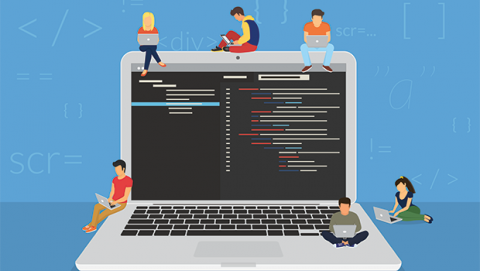In the past two and a half years, we’ve seen that remote work is not only possible but that it has become core to any organization’s employee experience. From an IT perspective, teams worked to quickly give employees the tools they needed to collaborate and meet deadlines – all while ensuring that with employees distributed, remote work did not increase security risks.
IT did not do this in a silo. At many firms, IT worked with HR to force organizational change management at breakneck speeds. What comes next, as teams return to hybrid or fully remote workplaces, might be the hardest part.
The practices adopted during the pandemic became in many ways the industry standard and changing our collective muscle memories may prove difficult. For younger workers who have spent their entire career at home, remote work is the only way. Meanwhile, more senior employees have become acclimated to the new lifestyle and may hesitate to return to the office.
[ Related read: Hybrid work: 4 ways to strengthen teams and boost productivity. ]
In partnering with HR, one of the most pressing challenges IT can solve is defining the employee experience and making it universal across locations. Pre-pandemic, the needs of remote workers often got little attention. The past two years, however, created parity: From video calls to cloud storage and collaboration, the reliance on shared tools fostered equity and a connection that could now be challenged with a hybrid workforce.
For companies that are asking employees to return to the office, IT needs to bring the in-office experience up to par with working from home. This involves both the science of creating the systems and infrastructure to support these relationships and the art of ensuring employees are using them.
1. Partner with HR to personalize onboarding
One critical way to enrich the employee experience is to ensure that employees feel supported by their organization. Firms have cycled through employees whose tenure has begun and ended during the pandemic without ever stepping into a physical office. HR and IT can work together to create an organizational culture of support.
The organizational connectivity begins at onboarding with both HR and IT. Too often, hardware is sent to employees with limited guidance and complicated instructions, creating a poor onboarding experience. This early negative experience can cause delayed employee productivity and early aggravation. Personalizing setup with IT-led video calls and a step-by-step checklist for employee onboarding is key.
While ticketing systems and similar processes are essential for most large enterprise IT operations, properly explaining the systems empowers employees to understand and utilize them, which raises the efficiency of IT across the organization.
[ Read next: Hybrid work: 5 tips for prioritizing the employee experience ]
2. Use AI for employee well-being
The Great Resignation has forced enterprise leadership teams to change their behaviors in order to retain employees. Beyond the human element of providing long-term options for remote work and permanent accommodations, IT can implement systems that encourage employees to prioritize their mental health and wellness.
IT can humanize the employee experience by leveraging AI and chatbots on intranet sites, providing calls to action to learn about mental health and available benefits, for example, or viewing data on how much time employees spend on emails and calls after hours to better understand overall work strain.
By delivering this data to HR, IT can help HR improve employee affinity, which in turn strengthens long-term connectivity between employees and the firm.
[ Read next: Building a learning culture with AI ]
3. Foster workforce connections
To further foster human connections, developing tools that empower employees to learn about one another forges relationships between teams. Firms that incorporate tools such as Zoom or Microsoft Teams to digitize the employee experience should also invest to ensure that employees are actually using them.
Gamification of these tools to drive near- and long-term adoption is key. Rewarding and highlighting employee actions across these platforms creates a shared employee connection regardless of where employees are located. Incentivizing adoption and ultimately seeing which tools stick helps leaders build camaraderie.
[ Don’t try to recreate what was normal before the pandemic. Learn from leading CIOs in a new report from Harvard Business Review Analytic Services: Maintaining Momentum on Digital Transformation. ]
Successful digital transformation requires successful change management
Implementing the best technology in the world will not guarantee employee productivity. This requires effective change management efforts that ensure employees adopt and are able to proficiently use new tools and approaches in their work environment.
Start by getting to know your workforce. Some employees are eager adopters; others may resist new technologies. Some employees can easily figure out how to use new technologies, others require more training and support. Understanding these different employee personas will help your IT and HR teams work together to implement strategies that encourage tech adoption.
As the hybrid workplace becomes the industry standard for knowledge workers, creating an environment that facilitates human connections will take on increased importance. The partnership between HR and IT is critical and I look forward to seeing it continuously drive the employee experience in the digital workplace.
[ Want more advice on leading hybrid work? Read What is a hybrid work model? and Hybrid work model: 5 advantages. ]






